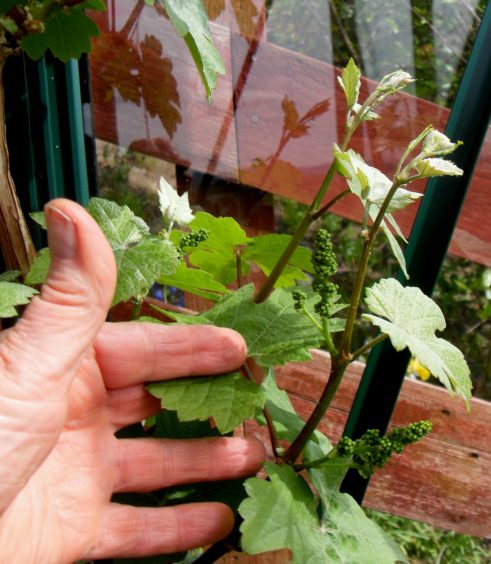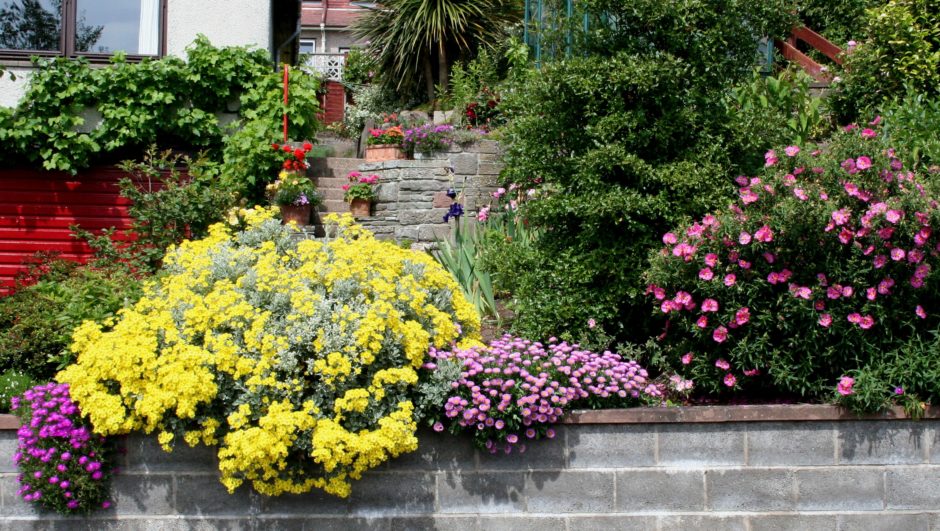The spring flowering bulb season has now passed but the cool spring weather allowed flowering to last for weeks brightening up gardens with daffodils, tulips and many other flowers.
However before we remove the old foliage we must let it die down to help build up strong bulbs for flowering next year.
During this time we have been growing plants for our summer display for tubs, beds, and hanging baskets.
Some of the hardier types such as chrysanthemums were planted out at the end of April, and geraniums planted out in early May, but Bizzie Lizzies, marigolds, petunias and tuberous begonias are still a bit tender so these were the last to get put outdoors for hardening off.
The mild winter allowed geraniums grown on windowsills from autumn cuttings to put on plenty of growth and flowers, but these were picked off to encourage growth.
This gave us more scope to take tops out for cuttings, so now we have plenty of strong young geraniums for planting out where they can flower all through summer in beds, tubs and baskets.
Where spring flowering wallflowers and polyanthus have gone over these can be removed to the compost heap, but pansies always want to continue flowering till mid summer, so carefully lift them out of containers and find a quiet spot in the garden to plant them into.
This is a great idea for brightening up a few dull corners, and the compost helps to improve the soil.
The early summer flowers with impact will include the oriental poppies with huge bold red flowers and the flag iris in a wide range of colours.
Another early flowering plant is the Euphorbias, with red flowers on the variety griffithii Fireglow and yellow flowers on polychroma.
Be very careful when working close to the Euphorbias as any damage to the stem allows sap to flow which can be a severe irritant on exposed skin.
Fruit trees are a picture in late spring and early summer when the apples, plums, pears and cherries are covered in blooms with the promise of good crops to follow.
Last year my apple Fiesta never had any flowers as it is a biennial cropper, but this year it has a mass of blooms.
Peach Avalon Pride had flowers so small that I thought they had no chance.
This is a late flowering variety said to have some resistance to peach leaf curl, and although there has been plenty bees around I doubt if they could see the flowers.
However on close inspection I see I have about twenty very small peaches beginning to grow, but the peach leaf curl disease has infected most of the foliage. Time will tell if I see any peaches mature in late summer.
Summer flowering shrubs usually start with the Forsythia, followed on with Viburnums then Ceanothus, Berberis darwinnii and the tall highly scented Philadelphus.
This year they are all putting on a great show, and the first of the rhododendrons and azaleas are now in flower.
Pieris Forest Flame may be growing in my shade border, but it still manages to put on a great show of bright red shoots and white flowers.
Down at ground level the dwarf succulent Delosperma nubigenum is a mass of yellow daisy shaped flowers in May and the Phlox subulata is smothered in deep pink flowers.
This phlox sometimes flowers at the same times as the Apeldoorn tulips, but not this year, as all the tulips came a couple of weeks early.
Climbing and bush roses are now all getting ready to join the summer flowers, despite plagues of greenfly, and appearance of mildew after the long dry spell.
Wee jobs to do this week
Grape vines under glass have made an early start with spurs all producing many shoots most of which are showing one or two bunches of grapes.
Outdoors cool weather has kept back growth so summer pruning for these can wait another three weeks.
Pruning for both glasshouse grown and outdoors against south facing walls and fences is the same.
Remove the growing tip of every sideshoot leaving one or two leaves after the grape bunch. Later on as more shoots develop cut these to leave only one leaf.
Any shoot without any sign of grapes can be removed.
At the end of summer even more thinning is needed to allow sunlight to penetrate into the developing grapes to help ripen them up and reduce incidence of botrytis mould.

















